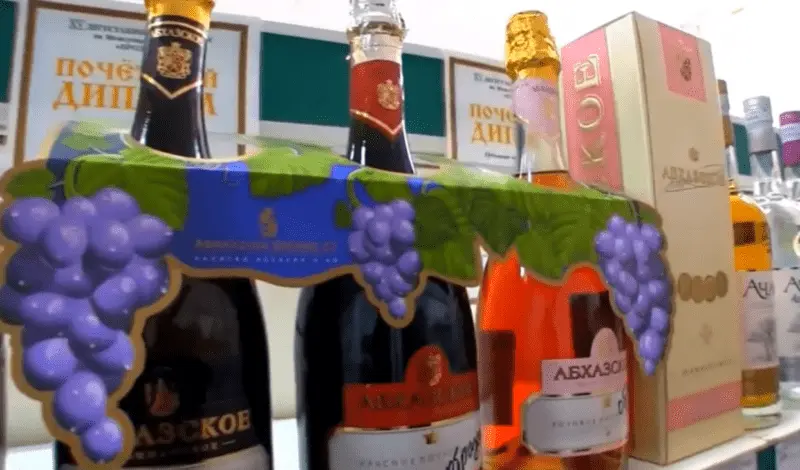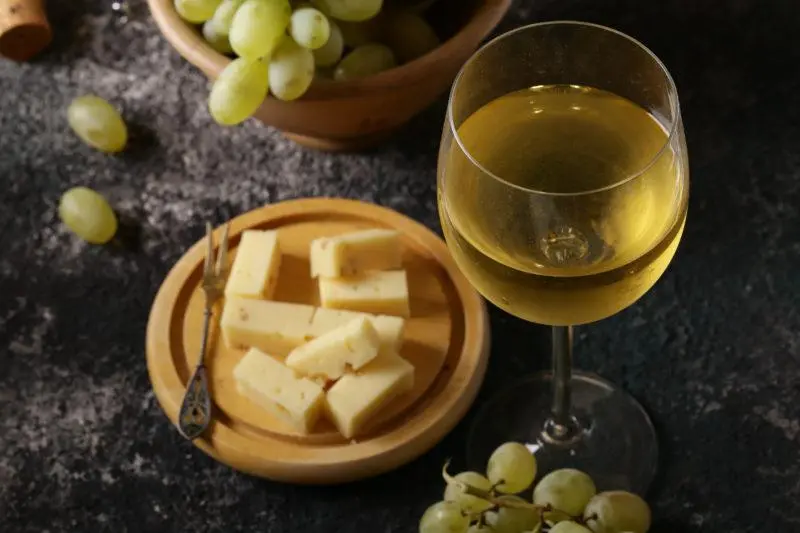Contents
Let’s start the story from afar, several millennia before our era. It is difficult to give a more exact date, but archaeological excavations show that, approximately 4-5 thousand years ago, winemaking began on the territory of modern Abkhazia.
Whether modern Abkhazia has preserved such old traditions or is it just a coincidence, I can’t say. But the region’s humid subtropical climate and mineral-rich rivers have given rise to a plethora of white and red wines, including the hero of this article, Psou wine.
Historical background
I will continue the historical digression, but I will already tell you specifically about Psou wine. The first bottles left the assembly line of the Sukhumi winery in 1958. The Georgian grape Tsolikouri was chosen as the raw material. This is a very popular variety from which dry, semi-sweet and sparkling wines are produced.

Later, Aligote, Sauvignon, Riesling and Rkatsiteli began to be used. If you are in Abkhazia and decide to try Psou, be sure to look at the composition.
I can’t help but share my opinion on how things are now. To meet on the shelves of shops (including online stores) Psou from Tsolikauri is real luck. Of the ones I found, most of them were from a mixture of different grape varieties, in which the percentage of Tsolikauri content is unknown. Perhaps you will have better luck.
As mentioned above, now Psou is made mainly by blending, i.e. mixing different grape varieties. It is difficult to say how such changes in production technology affected the taste, but Psou is considered one of the most popular Abkhazian wines. By the way, the Sukhumi plant supplies Psou to Russia, where it is also in great demand among connoisseurs.
Production features
Wine production in Abkhazia is a purely male job. All stages – from grape harvest to bottling – are made by reliable men. Perhaps it is this feature that gives the local wine a peculiar character.
As for Psou, several features can be distinguished:
- The must is fermented in oak barrels.
- Braga is cleaned with bentonite.
- Bottled wine is turned daily during the maturation (aging) phase.
Tasting characteristics of Psou wine
The most long-awaited moment has come – we taste Psou. Let’s start with the general characteristics (briefly):
- category – white, semi-sweet;
- fortress – 9-12% (depending on the composition).

Color
Psou has a light straw color.
fragrance
The drink has a fresh, pleasant aroma, rich floral tones predominate in the bouquet.
Taste
Usually you don’t expect a refined taste from budget alcohol, but Psou in this regard, I confess, pleasantly surprises. For 500 rubles (average cost) you will get a decent table wine, which is perfect both for pure consumption and for marinades in cooking.
I will try to avoid vague wording like: “delicate”, “refined”, etc. I will start by saying that it is not sour, although many neighbors in the price category can be incredibly sour, while being considered semi-sweet.
Sweets are also in moderation, especially the absence of the feeling that the wine was artificially sweetened. Alcohol is not felt, it is understandable, the drink is not fortified.
Production technology
I have already mentioned the features of production, now let’s talk about technology. I will omit the stages of grape harvest and some minor details.
- The must is aged (fermented) in oak barrels for 9 to 15 days. At this stage, maintain a constant temperature of 28 degrees.
- For clarification, bentonite (1 kg per 10 l) is added to the resulting mash and allowed to rest for several days in a cool room.
- At the final stage, the wine is filtered, getting rid of sediment from bentonite and wine material, bottled and placed in special cellars for months, and sometimes years.
How to buy real wine
To buy real wine, you have to go to a real liquor store. Any seller who values his reputation will not deal with counterfeit.
Let’s skip right away:
- markets;
- stalls with alcohol;
- convenience stores.
Choose:
- specialized stores;
- large retail chains.
These are, so to speak, preventive measures. Now let’s look at the bottle itself. She has a standard form, it will not be difficult to fake. But scammers often have problems with the label, especially in the category of inexpensive wines. Pay attention to:
- fonts – clear, without blurry edges;
- label – pasted evenly, without bubbles.

Also, pay attention to the barcode. Firstly, it must be, and secondly, its numbers must match the brand of wine.
If you follow the rules I have described, you will not fall for a fake with a 99,9% probability.
approximate price
This question worries many. I met several prices and found some pattern. The minimum figure is from 400 rubles. For that price, you’ll get a Riesling-based drink, sometimes with Rkatsiteli. From 500 r. you can meet Psou from Aligote and Sauvignon Blanc. Perhaps it’s just a coincidence.
In general, if you are going to buy Psou, focus on 450-550 rubles.
How to serve
Rule of thumb: Psou is served chilled. The recommended temperature is 3-5 degrees. I didn’t find clear dogmas on the dishes, I think any wine glass will do.
What do they drink Abkhazian wine with
I have criticized the use of wine with chocolate many times and I repeat: do not snack on sweets or desserts! I personally forbid you to do this. But, Psou goes well with:
- white meat;
- fish dishes;
- snacks (vegetables);
- mushrooms.
If this is not enough for you, use the ageless classic – cheese.

Other uses
Psou is perfect for preparing a variety of dishes and sauces. The meat is especially good. Stewing in wine gives it a spicy sweetness. In second place I will put fish, especially fatty varieties. Do not forget about desserts, mentioning the famous pear in wine is enough. Although, in the latter case, red is used.
Reviews of wine Psou
There are a lot of flattering comments on the Internet and they are probably not cheated. This makes no sense, the product has been on the market for too long and the manufacturer is counting on an already established reputation.
Psou is praised for its lack of sourness, moderate sweetness, pleasant taste and, what surprised me, the absence of a headache after using it. The last criterion suggests how far we are still from the high culture of drinking alcohol. Alas and ah.
Conclusion
Despite its fame, Psou was a small discovery for me. I can’t say that I didn’t expect good taste, but I definitely didn’t expect it from wine for 500 rubles. For its category, this is a very worthy option.
If you personally do not like the taste of Psou, you can always use it in cooking a variety of dishes. In fact, this is an inexpensive universal wine with a decent combination of taste and aroma.
Tell your friends about it by sharing the article on social networks. Maybe it’s time for you to meet for a bottle of golden wine?









